
Chester William Nimitz was a fleet admiral in the United States Navy. He played a major role in the naval history of World War II as Commander in Chief, US Pacific Fleet, and Commander in Chief, Pacific Ocean Areas, commanding Allied air, land, and sea forces during World War II.

The United States Pacific Fleet (USPACFLT) is a theater-level component command of the United States Navy, located in the Pacific Ocean. It provides naval forces to the Indo-Pacific Command. Fleet headquarters is at Joint Base Pearl Harbor–Hickam, Hawaii, with large secondary facilities at Naval Air Station North Island, California.
They Were Expendable is a 1945 American war film directed by John Ford, starring Robert Montgomery and John Wayne, and featuring Donna Reed. The film is based on the 1942 novel of the same name by William Lindsay White, relating the story of the exploits of Motor Torpedo Boat Squadron Three, a United States PT boat unit defending the Philippines against Japanese invasion during the Battle of the Philippines (1941–42) in World War II.
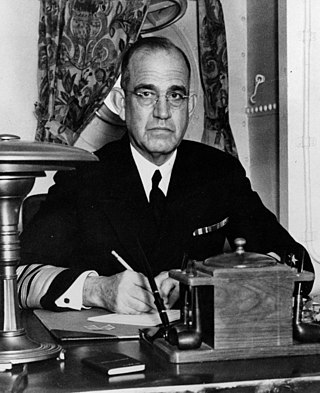
James Otto Richardson was an admiral in the United States Navy who served from 1902 to 1947.

Norman (Nicholas) Scott was a rear admiral in the United States Navy. He was killed along with many of his staff when the ship he was on – the light cruiser USS Atlanta – was hit by gunfire from the heavy cruiser USS San Francisco during the nighttime fighting in the Naval Battle of Guadalcanal. He was the second of five US Navy admirals killed in battle during WWII, including: Isaac C. Kidd ; Daniel J. Callaghan ; Henry M. Mullinnix ; and Theodore E. Chandler.
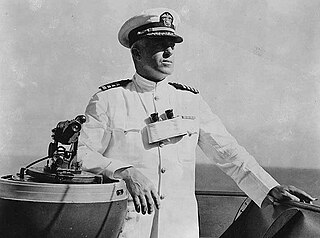
Daniel Judson Callaghan was a United States Navy officer who received the Medal of Honor posthumously for his actions during the Naval Battle of Guadalcanal. In a three-decades-long career, he served his country in two wars. Callaghan served on several ships during his first 20 years of service, including escort duties during World War I, and also filled some shore-based administrative roles. He later came to the attention of President Franklin D. Roosevelt, who appointed Callaghan as his naval aide in 1938. A few years later, he returned to command duties during the early stages of World War II. An enemy shell killed Callaghan on the bridge of his flagship, USS San Francisco, during a surface action against a larger Japanese force off Savo Island. He was the third of five US Navy admirals killed in battle during WWII, including: Isaac C. Kidd ; Norman Scott ; Henry M. Mullinnix ; and Theodore E. Chandler.

The United States Navy Nurse Corps was officially established by Congress in 1908; however, unofficially, women had been working as nurses aboard Navy ships and in Navy hospitals for nearly 100 years. The Corps was all-female until 1965.
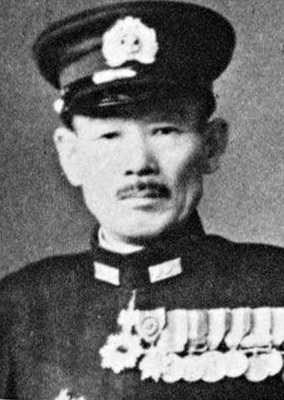
Hiroaki Abe was an admiral in the Imperial Japanese Navy during World War II.
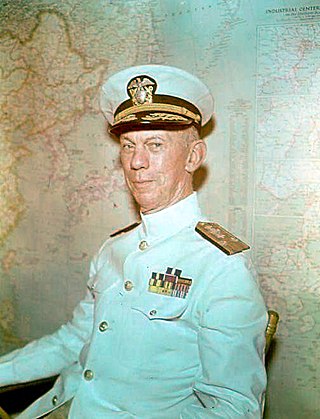
Charles Horatio "Soc" McMorris was an American rear admiral during World War II, most notably commanding forces at the Battle of the Komandorski Islands during the Aleutian Islands Campaign.

Harm's Way is a 1962 war novel by James Bassett. Set in the Pacific theater during World War II, it follows the exploits of Captain Rockwell "Rock" Torrey as he plans and carries out naval operations against the Japanese. The book was adapted into the 1965 film In Harm's Way, which was produced and directed by Otto Preminger and starred John Wayne and Kirk Douglas.
Ensign John Charles England was an officer in the United States Navy. He died on USS Oklahoma after it was torpedoed and sank in the Japanese Empire's attack on Pearl Harbor. The circumstances of his death have been described as heroic, and he is the namesake of two U.S. Navy vessels. He was also awarded a Purple Heart. His remains were identified and returned home after seven decades and an intense inquiry.

Chūichi "King Kong" Hara was a Japanese admiral in the Imperial Japanese Navy during World War II. Heavier and taller than the average Japanese person, he was nicknamed "King Kong" by his friends earlier in his career.

Walter Stratton Anderson was a Vice Admiral of the United States Navy, who served as the Executive officer of USS Arizona in World War I and as Commander Battleships, Battle Force in the Pacific Fleet, and of the Gulf Sea Frontier, during World War II.

Ralph Andrew Ofstie was a Vice Admiral in the United States Navy, an escort carrier commander in World War II, Deputy Chief of Naval Operations (Air), and Commander of the U.S. Sixth Fleet. He was born in Eau Claire, Wisconsin and his hometown was Everett, Washington.
Captain Forrest Rosecrans "Tex" Biard was an American linguist in the U.S. Navy codebreaking organization during the Second World War. A pre-war student of Japanese, Biard's translation work is considered to have been an important part of American military success.

Frederick Hayes Michaelis was an admiral in the United States Navy who served in World War II, the Korean War, and the Vietnam War.

Admiral Charles Maynard "Savvy" Cooke Jr., USN, was a United States Navy four star admiral who saw service in World War I and World War II and later served as commander of United States Seventh Fleet (COMSEVENTHFLT) from 1946 to 1947 and commander of U.S. Naval Forces, Western Pacific (COMNAVWESPAC) from 1947 to 1948.
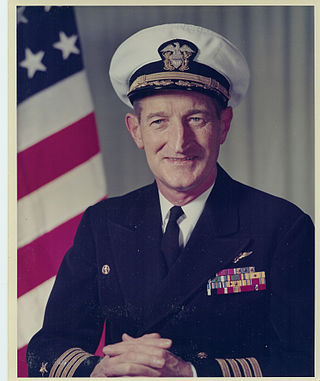
Frederick T. Moore Jr. was a United States Navy captain. During World War II, he was executive officer of Fighter Squadron 1 operating off the carrier USS Yorktown (CV-10) and commanding officer of the Air Group 35 aboard the aircraft carrier USS Chenango in the Pacific. During the Korean War, he was the commanding officer of naval air training at NAS Pensacola and the air officer on USS Coral Sea. His first sea command was aboard USS Suribachi. In 1962–1963, Moore was the eighth commanding officer of USS Saratoga. Late in his career during the Vietnam War, he was Chief of Staff of the Naval Air Training Command at Naval Air Station Pensacola from October 1965 to July 1969.

William Rea Furlong was United States Navy Rear admiral during World War II, who served as the Chief of Naval Ordnance from 1937 to 1941. After Japanese Attack on Pearl Harbor, Furlong was tasked with the salvaging and repairing of the sunken U.S. ships.
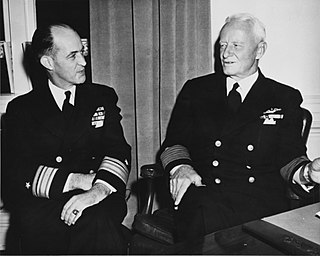
Richard Harold Cruzen was a decorated United States Navy officer with the rank of Vice Admiral. A veteran of both World Wars, he is best known for his participation and leadership in Antarctic expeditions.


















